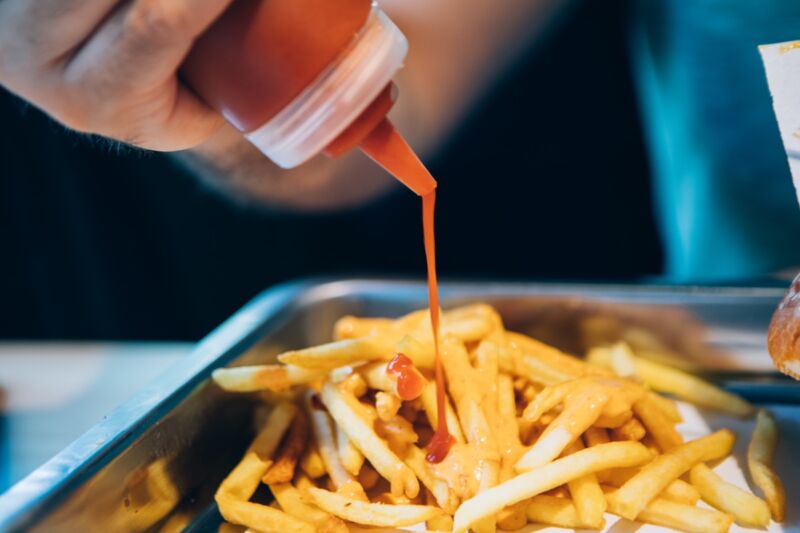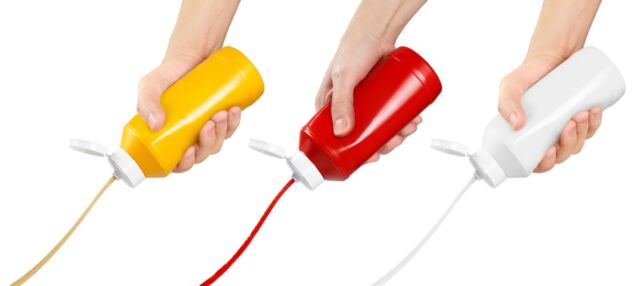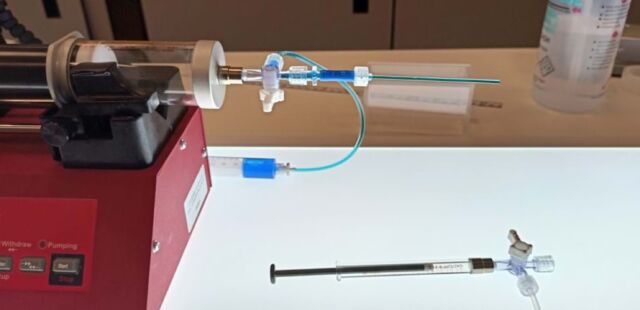
Getty Images
Ketchup is one of the most popular condiments in the US, along with mayonnaise, but getting those few last globs out of the bottle often results in a sudden splash. “It’s annoying, potentially embarrassing, and can ruin clothes, but can we do something about it?” Oxford University’s Callum Cuttle said earlier this week at a press conference at an American Physical Society meeting on fluid dynamics in Indianapolis, Indiana. “And more importantly, can understanding this phenomenon help us with other problems in life?”
The answer to both questions is a resounding yes, per Cuttle. Together with his Oxford colleague, Chris MacMinn, he conducted a series of experiments to identify the forces at play and develop a theoretical model for ketchup splashing. One of the most interesting findings: squeezing the bottle more slowly and doubling the nozzle diameter helps prevent splashing. There is also a critical threshold where the flow of ketchup suddenly shifts from no splash to splash. A preprint paper has been posted on arXiv and is currently being peer reviewed.
Isaac Newton identified the properties of what he considered an “ideal fluid.” One such property is viscosity, loosely defined as how much friction/resistance there is to flow in a given substance. The friction arises because a flowing fluid is essentially a series of layers sliding past each other. The faster one layer slides over another, the more resistance there is, and the slower one layer slides over another, the less resistance there is.
But not all fluids behave like Newton’s ideal fluid. In Newton’s ideal fluid, viscosity is largely dependent on temperature and pressure: water will continue to flow – i.e. behave like water – regardless of other forces acting on it, such as being stirred or mixed. In a non-Newtonian fluid, the viscosity changes in response to an applied stretch or shear force, crossing the line between fluid and solid behavior. Physicists like to call this a “shear force”: Stirring a cup of water produces a shear force, and the water slides to get out of the way. The viscosity remains unchanged. But the viscosity of non-Newtonian fluids changes when a shear force is applied.
Ketchup is a non-Newtonian liquid. Blood, yogurt, gravy, mud, pudding, and thickened pie fillings are other examples, along with hagfish slime. They are not all exactly alike in their behaviour, but none adhere to Newton’s definition of an ideal fluid.

For example, ketchup consists of pulverized solid tomatoes suspended in liquid, making it more of a “soft solid” than a liquid, according to Anthony Strickland of the University of Melbourne in Australia. The solids connect to create a continuous network, and one must overcome the power of that network to keep the ketchup flowing – usually by tapping or hitting the bottle. Once that happens, the viscosity decreases, and the more it decreases, the faster the ketchup flows. Scientists at Heinz have determined the optimum ketchup flow rate to be 0.0045 per hour.
If there’s only a little bit of ketchup left in the bottle, you’ll have to hit it much harder, increasing the chance of splashing. “By the time you get to the end, a lot of what’s in it is air,” Cuttle said. “So when you squeeze, you’re compressing air in the bottle, which builds pressure that drags the bottle [ketchup] The nozzle provides a viscous drag force that counteracts the viscous flow of the ketchup, and the balance between them determines the flow rate. As the bottle empties, the viscosity decreases as there is less and less ketchup to push. And the outflow of liquid means there is more and more room for the air to expand in the bottle, reducing the buoyancy force over time.
Understanding the complicated dynamics of why the smooth stream suddenly shifts to a splatter started with simplifying the problem. Cuttle and MacMinn created an analog of a ketchup bottle, filled syringes (actually capillary tubes) with ketchup, then injected varying amounts of air (from 0 to four milliliters) at fixed compression rates to see how changing the amount of air affected the flow rate and whether the ketchup splattered. They repeated the experiments with syringes filled with silicone oil to better control viscosity and other key variables.

University of Oxford
The result: the syringes injected with 1 milliliter or more of air produced splashes. “This tells us that you need some air in the syringe or bottle to generate splashes and create that unstable burst of flow,” Cuttle said. That sets a critical threshold for “sauce splashing” where the ketchup shifts from a smooth flow to splashing, depending on factors such as the amount of air, compression rate, and nozzle diameter. Below that threshold, the buoyant force and fluid outflow are balanced so that the flow is smooth. Above the threshold, the thrust decreases faster than the outflow. The air is compressed excessively, like a pent-up spring, and the last bit of ketchup is squeezed out in a sudden burst.
“Splashing a ketchup bottle can come down to the smallest of margins. Squeezing even a little too hard will produce a splash instead of a steady stream of liquid,” Cuttle said. A helpful tip is to squeeze more slowly, which slows down the rate at which the air is compressed. Increasing the diameter of the mouthpiece would help even more, as the rubber valve at the mouthpiece can increase the risk of splashing. Granted, the valves help avoid leads, but they also force you to build up a certain amount of pressure to keep the ketchup flowing out of the bottle. Cuttle recommends simply taking the cap off the bottle when it’s almost empty, as a practical hack, and squeezing the last bits of ketchup out of the wider neck.
“It’s common sense, but now there’s a rigorous mathematical framework to back it up,” Cuttle said. “And a gas pushing a liquid out of the way is something that happens in a lot of other contexts.” That includes aquifers for storing captured carbon dioxide, certain types of volcanic eruptions, and re-inflating collapsed lungs.
DOI: arXiv, 2022. 10.48550/arXiv.2112.12898 (About DOIs).

